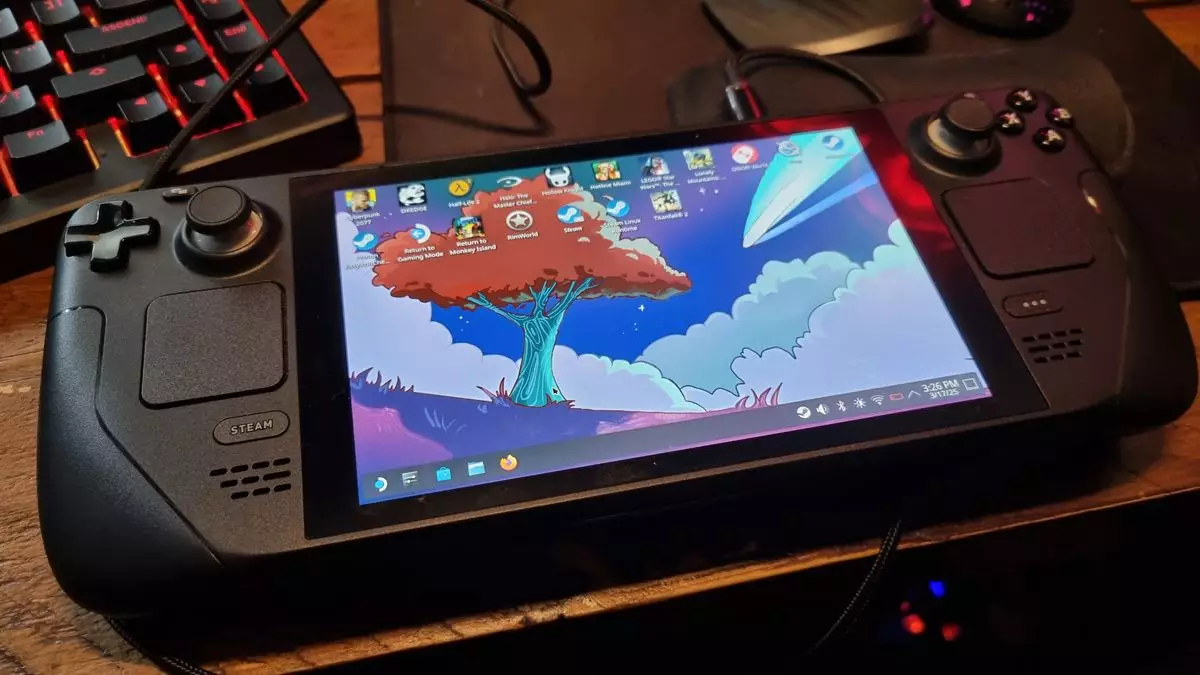The gaming landscape is evolving at an unprecedented pace, and Valve’s SteamOS 3.0 is positioned at the heart of this transformation. Since its initial launch with the Steam Deck in 2022, it has primarily catered to Valve’s own hardware, largely sidelining other potential contenders in the handheld space. However, the anticipated release of SteamOS for the Lenovo Legion Go S in May signals a significant pivot towards inclusivity in the handheld gaming ecosystem. This development could potentially mark the dawn of a much deeper integration of SteamOS into various devices, setting the stage for a new era in portable gaming.
Breaking New Ground with Non-Steam Deck Handhelds
The release notes from the SteamOS 3.7.0 Preview update, colloquially dubbed the “Pi Day update,” are nothing short of groundbreaking. They unveil the initial infrastructure support for non-Steam Deck handhelds, primarily spotlighting the Lenovo Legion Go S. While it may seem like an incremental step, the potential ramifications for the future of handheld gaming are substantial. Users can expect to sign onto a platform that prizes unification and consistency in gameplay experience across multiple devices. The implications for developers are equally notable, offering a platform that nurtures a more extensive gaming community beyond the quintessential Steam Deck.
Yet, while excitement brews over these advancements, some skepticism remains. The question arises: will this be enough to attract a wider audience and encourage developers to embrace SteamOS? Existing handheld devices have notoriously strained to integrate compelling game-lauching interfaces that can compare to the allure of Steam. As these newer handhelds begin to emerge, their success will hinge on Valve’s ability to retain SteamOS’s inherent advantages.
The Upgraded Desktop Experience: A Double-Edged Sword
Alongside the broader device support, the update brings enhancements to the desktop mode, notably with the integration of Plasma 6.2.5. This upgraded interface, characterized by floating panels and an aesthetically pleasing cube desktop effect, aims to modernize the user experience. The return of nostalgic features like the cube effect showcases Valve’s deliberate strategy to ensure that even while users navigate functional needs, they’re simultaneously enveloped in an engaging environment.
However, being part of a Preview update comes with inherent unpredictability. Users can expect to confront occasional bugs or quirks that may disrupt their experience, such as power button glitches and unexpected hangs. The new wallpaper, Scarlet Tree, while visually appealing, cannot mask the fact that such inconsistencies may hinder users’ willingness to embrace the updates fully, leading to a mixed reception from the loyal Steam community.
Bluetooth Connectivity and System Compatibility: Soft Improvements
Amid the more conspicuous upgrades, Valve has also focused on refining various underlying functionalities, boasting fixes to Bluetooth devices and enhancing display compatibility when utilizing the Deck Dock. These subtle adjustments, while not groundbreaking, speak volumes about Valve’s commitment to improving system reliability. However, for avid gamers who seek robust performance, these enhancements may feel like mere band-aids offering little to remedy the more pressing issues that handheld support must navigate.
The intricacies of system updates also showcase a responsive approach from Valve, addressing circumstances where updates may fail due to corrupted configuration files. Yet, this attention to maintenance raises further questions about why such complications existed in the first place. Gamers demand a seamless experience, and any notion of instability can lead to disenchantment.
Looking Forward: The Future of SteamOS in Handheld Gaming
Despite the prevailing concerns, one cannot overlook the bigger picture—namely, the potential futures that SteamOS can offer. While current offerings in non-SteamOS devices provide reasonable solutions for launching games on Windows 11, Valve’s latest maneuvers indicate their intention to establish SteamOS as “the” optimal choice for gamers seeking unity and simplicity. The time feels ripe for Valve to capitalize on their proprietary advantages.
As SteamOS gradually expands its reach beyond the confines of its original hardware, the community’s appetite for a cohesive gaming ecosystem grows. The hope is that Valve not only embraces this need but actively shapes a future of portable gaming that resonates with both players and developers alike. The capital made from this increasingly connected environment could yield an even richer library of games that become accessible across a multitude of platforms. The real test for Valve lies not only in delivering effective updates but in forging meaningful relationships with developers that could lead to an explosive growth in a once-niche gaming segment.

